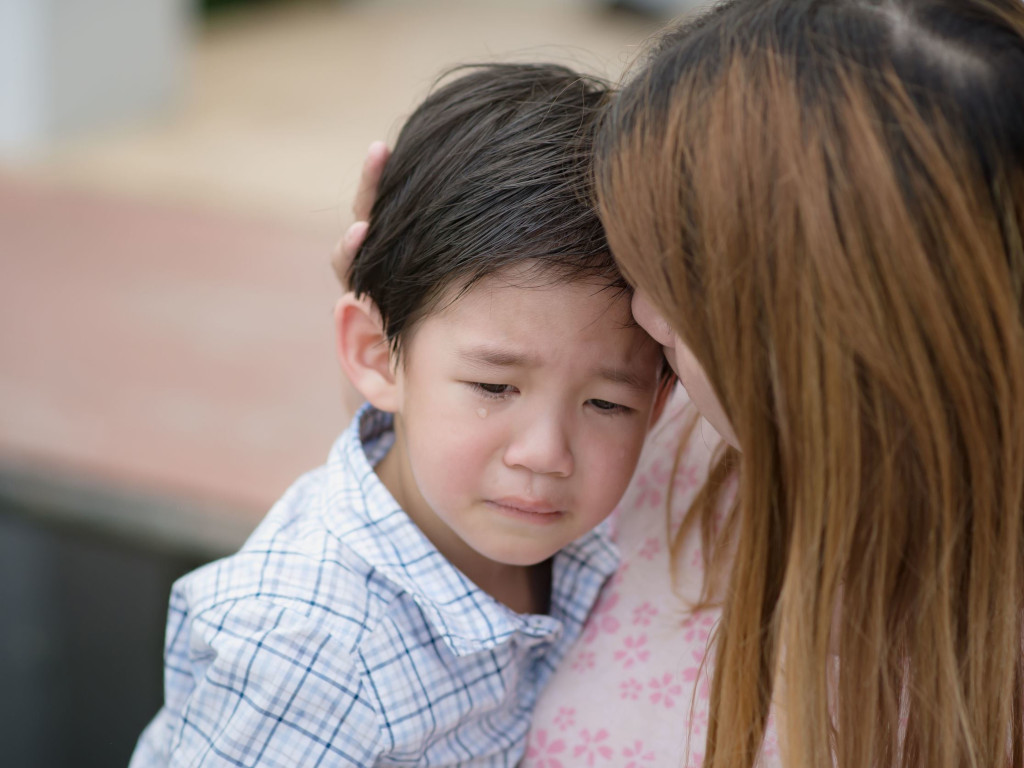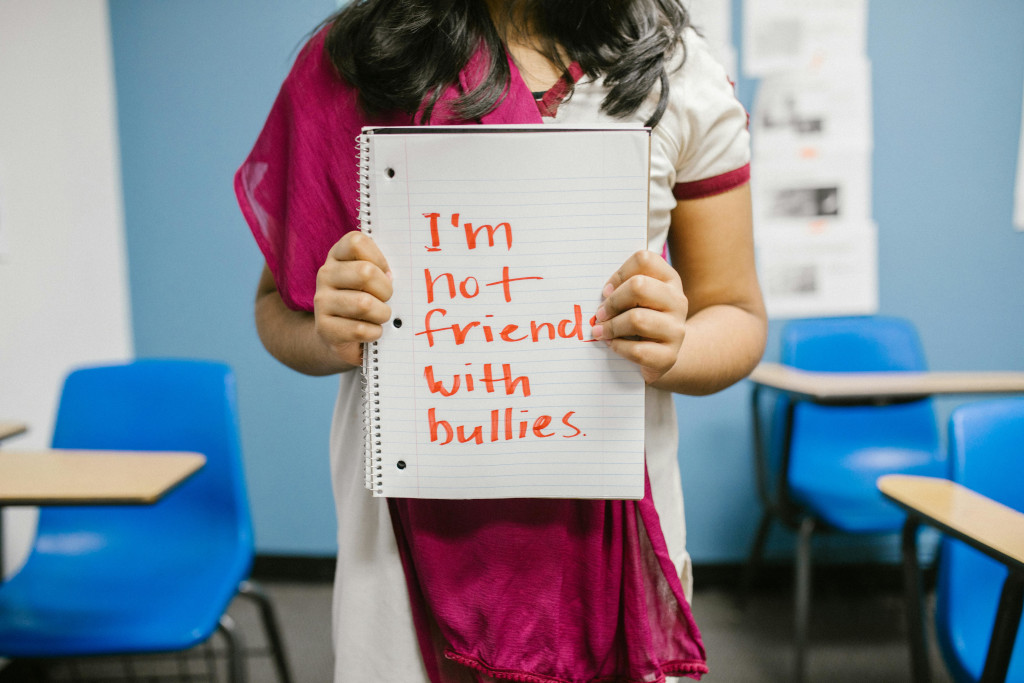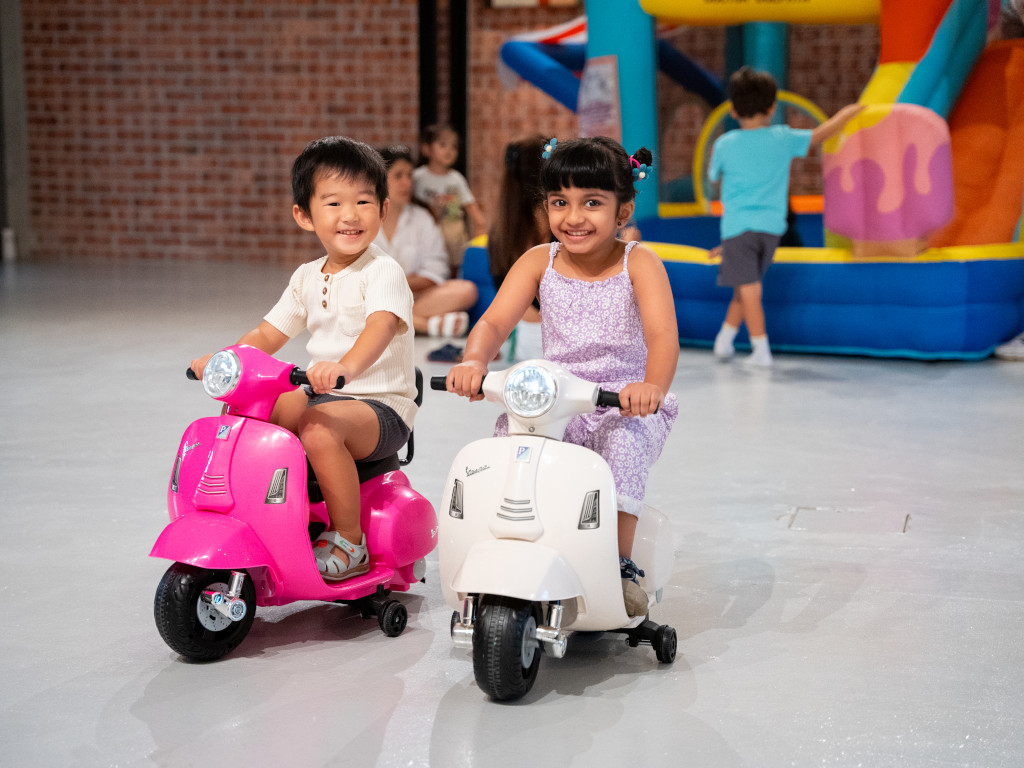SingaporeMotherhood | Preschooler & Up
March 2024
Bullying at School? Teach Your Child Three Lessons on Assertiveness

“He punched my right eye,” my youngest whispered, when I asked how his day went. He wasn’t visibly hurt, but suffice to say, I was shocked. It was the second week of school and he was only in Primary One! So many questions raced through my mind. I badly wanted details about this bullying incident, but decided to first connect with his feelings.
“How did you feel?” I asked, as we walked out of the school gate.
He replied shakily, “He didn’t hit very hard, but I was scared.”
(See also: IS MY KID REALLY ‘OLD ENOUGH’ TO TAKE PUBLIC TRANSPORT IN PRIMARY ONE?)
Mind Over Matter
Connecting with a child’s emotions is vital because while our minds seek out details — triggering us into problem-solving mode, in the moment, what serves the child is not being interrogated. Instead, it’s more important to check in with their thoughts and feelings as we support their interpretation of the occurrence.
Mental and emotional trauma can last long after a physical bruise heals.
On the train ride home, I uncovered specifics of what happened. They were in the school hall and the older boy even stared at him, hands on hip, after the punch. I empathised with how my 110-cm-tall son felt dwarfed by this bigger boy and at the unprovoked hostility. This was his first experience being assaulted by a stranger, so I laid out the context for him.
“This big boys’ school is larger than your old one,” I said, referring to his kindergarten. “That means a lot more people with different ways of talking, behaving, and thinking. You are free to mix with those you feel safe and happy with. You do not have to play with those that you’re not comfortable with.”

Then, I triggered his problem-solving left brain by asking him what he could do if such bullying happened again. He said hesitantly, “Walk away? I don’t know….”
(See also: 10 EFFECTIVE WAYS TO HELP YOUR CHILD COPE WITH STRESS)
Expanding Boundaries
Understandably, his reservoir of experiences did not include a file on various actions he could take. So I brainstormed a few with him. “Could you tell a teacher? Maybe ask the boy why he did that?” And because I wanted to broaden the range of options, I enquired, “Why didn’t you push him back?”
“I wanted to be kind,” he said earnestly. I smiled at my innocent little boy — and realised it was time to expand his boundaries as his life experiences enlarged.
“Being kind does not mean you allow someone to hit you, or take your snack, because do you want to feel sad and scared every day?” I asked. (There had been a previous incident where another boy snatched the snack he purchased during recess.)
He shook his head.
“You have a voice, so speak up,” I continued. “Tell the boy or your friends. Report to the teachers and other adults in authority. What’s important is that you take actions to stop the bullying from continuing.”
It’s been three months and I haven’t heard of another bullying incident from my son. But it happens to many children and may even be happening to yours. So I want to share three lessons on assertiveness to deal with unwanted negative advances.
(See also: 10 ESSENTIAL SAFETY TIPS ALL PARENTS NEED TO TEACH THEIR CHILDREN)
#1 – Take Assertive Action from the Start
My eldest daughter had to deal with classmates saying mean things to her and another kicking her chair when she transferred to a new school in Primary Three.
Hurting people hurt people.
Instead of judging the bully, let’s first consider the environment they come from. I’m not saying we tolerate their actions, but instead of using aggression to retaliate against their hostility, ask how else we can be a space for them to stop their actions.

The first response is critical because that sets the tone as to whether the bullying action continues or is a clear signal of where your boundaries are. We discussed specific actions and my daughter decided to give the kicking culprit a sweet. Her classmate grabbed the sweet and while no words were ever uttered, the kicking stopped.
The longer you allow the initial action to continue, the stronger the interaction is set up for a power play, where the aggressor assumes a dominant position, and the victim, their subservient role. Changing the power dynamics requires more effort the longer the original roles have been accepted.
The responsibility lies on the victim to re-educate the aggressor on new acceptable behaviours. And the unspoken ‘I will no longer accept this from you’ conviction is what gets the message across. The stronger the personal conviction, the faster the bully is trained on the new rules of behaviour.
(See also: MARTIAL ARTS FOR KIDS − WHERE TO GROOM MINI NINJA WARRIORS AND KARATE KIDS IN SINGAPORE)
#2 – Respect Builds Assertive Behaviours
This lesson is targeted more at us parents than our children. Contrary to what most people assume, assertiveness is a skill that you can learn and practise. Yes, some may naturally be more soft-spoken, while others boldly voice their opinions from young. Yet we can teach assertiveness by simply modelling a healthy respect for our child’s choices.
Many parents overrule their child’s autonomy so much that we unconsciously train them to stop voicing their opinions. Don’t ask so much. Just do what I tell you to. Listen to me! — all common parenting retorts that stifle the child’s budding sovereignty.
When caregivers show little respect for a child’s boundaries, the child absorbs the unspoken communication of I’m right, just do what I say. This conditions them to stop speaking up for themselves, even when they are victims of bullying.
I am not suggesting a child plays the role of the parent, and either ignores or disobeys their parents’ wishes. But when we respect our child’s boundaries, we communicate that they are important enough to be seen, heard, understood, and respected.
(See also: HOW TO TEACH YOUR CHILDREN RESPECT)
#3 – Be an Assertive Bystander

Being an assertive bystander by being the voice for someone else is something else that we can teach our children. The three roles — bully, victim, and bystander — are always at play, whether in real life or online.
Assertiveness where one is clear on their boundaries and mindful of others’ preferences sets up a healthy sense of self. And a positive self-esteem is further reinforced when children learn to stand up for other victims against bullying.
In addition, having the confidence to act in alignment with their values means your child is less susceptible to negative peer influences. By helping them anchor in a strong sense of self-worth, they are less likely to blindly follow the majority later.
(See also: 6 TIPS TO KEEP YOUR YOUNG GAMER SAFE ONLINE)
Parents want to know: “At what age do I start respecting my child?”
It isn’t really about when they’re old enough. Instead, ask yourself this question:
We often teach respect as something due to seniors, but how can a child truly respect others if they don’t know how good it feels to command respect?
I remember respecting each of my kids from as young as infancy. After their showers, I would normally dry their ears with a cotton bud. One daughter would put her hands to her ears, a clear non-verbal communication that she did not enjoy the experience.
“I want to ensure we dry your ears and I understand you don’t like it. I promise not to go too deep in, okay?” I would wait for her nod and honour my word to her for a quick surface clean (even if I wanted a last dig!). That’s how I modelled a healthy respect for their personal wishes.

It does not mean we do not discuss or talk things over. But it does result in having conversations where each child — even my 17-year-old — chooses to confide in me. They ask for my opinions because they know I will not impose my thoughts and they value me broadening their horizon on various topics.
(See also: “MUM, ARE WE RICH?” – HOW WOULD YOU RESPOND?)
Let’s start encouraging assertive communications at home — where we respectfully listen to and expand our perspectives (when challenged) instead of insisting that our point of view is always the right one.
This develops confident, secure young ones, capable of critical thinking for themselves while open to ingesting alternative viewpoints. Because how else would parenting evolve without expanding the mindsets of the next generations?
All content from this article, including images, cannot be reproduced without credits or written permission from SingaporeMotherhood.
Follow us on Facebook, Instagram, and Telegram for the latest article and promotion updates.





